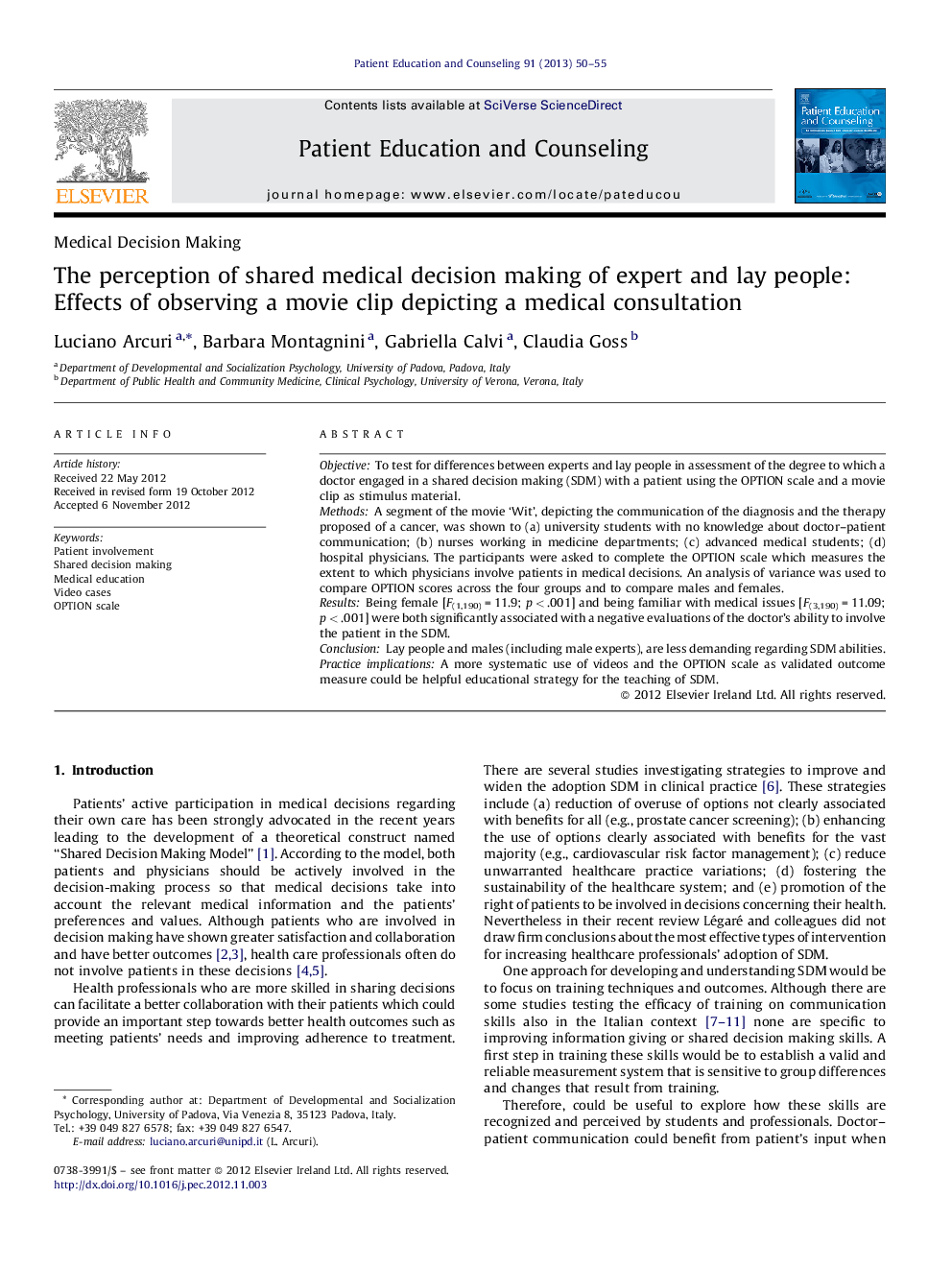| Article ID | Journal | Published Year | Pages | File Type |
|---|---|---|---|---|
| 6152518 | Patient Education and Counseling | 2013 | 6 Pages |
ObjectiveTo test for differences between experts and lay people in assessment of the degree to which a doctor engaged in a shared decision making (SDM) with a patient using the OPTION scale and a movie clip as stimulus material.MethodsA segment of the movie 'Wit', depicting the communication of the diagnosis and the therapy proposed of a cancer, was shown to (a) university students with no knowledge about doctor-patient communication; (b) nurses working in medicine departments; (c) advanced medical students; (d) hospital physicians. The participants were asked to complete the OPTION scale which measures the extent to which physicians involve patients in medical decisions. An analysis of variance was used to compare OPTION scores across the four groups and to compare males and females.ResultsBeing female [F(1,190) = 11.9; p < .001] and being familiar with medical issues [F(3,190) = 11.09; p < .001] were both significantly associated with a negative evaluations of the doctor's ability to involve the patient in the SDM.ConclusionLay people and males (including male experts), are less demanding regarding SDM abilities.Practice implicationsA more systematic use of videos and the OPTION scale as validated outcome measure could be helpful educational strategy for the teaching of SDM.
